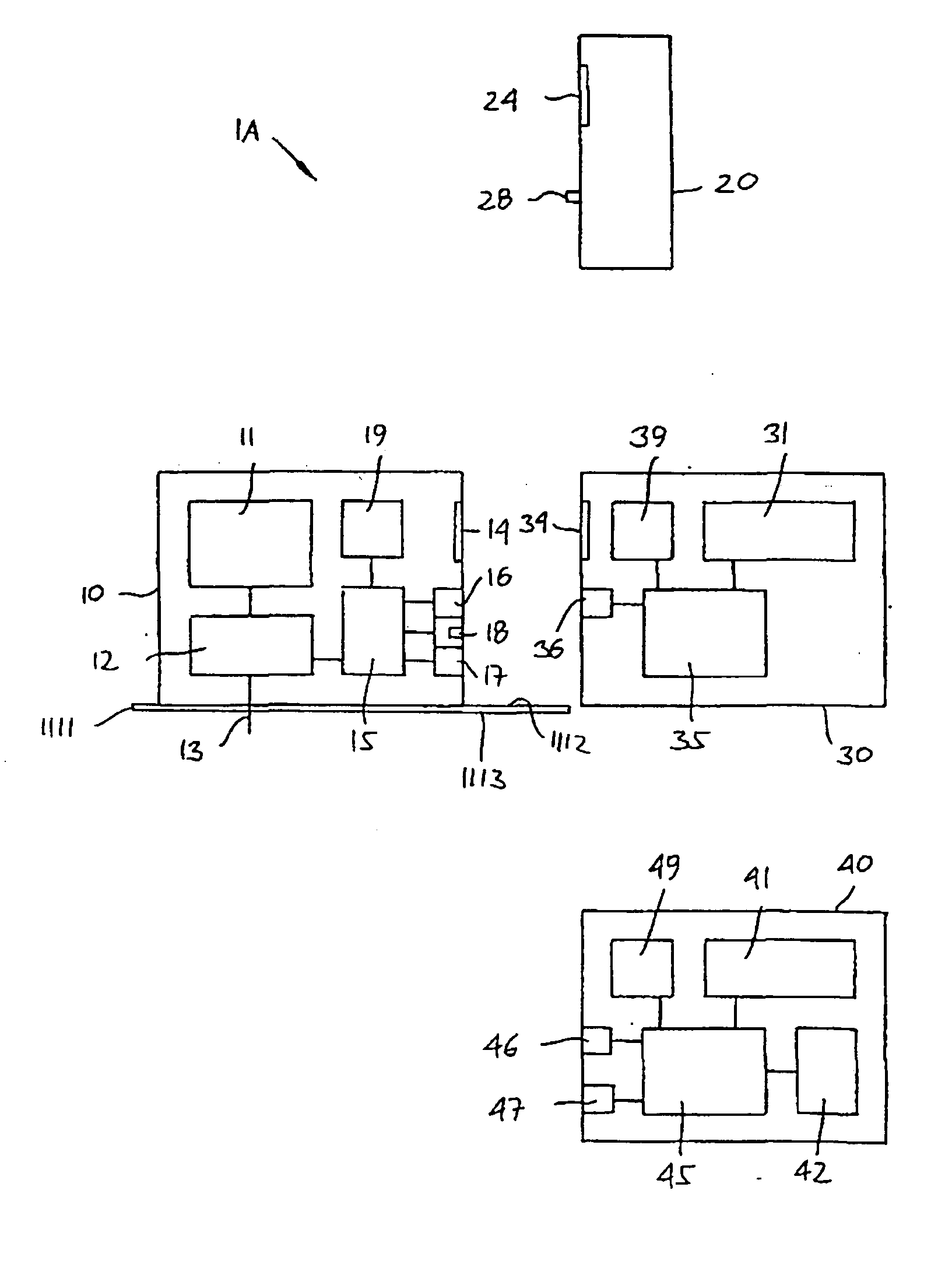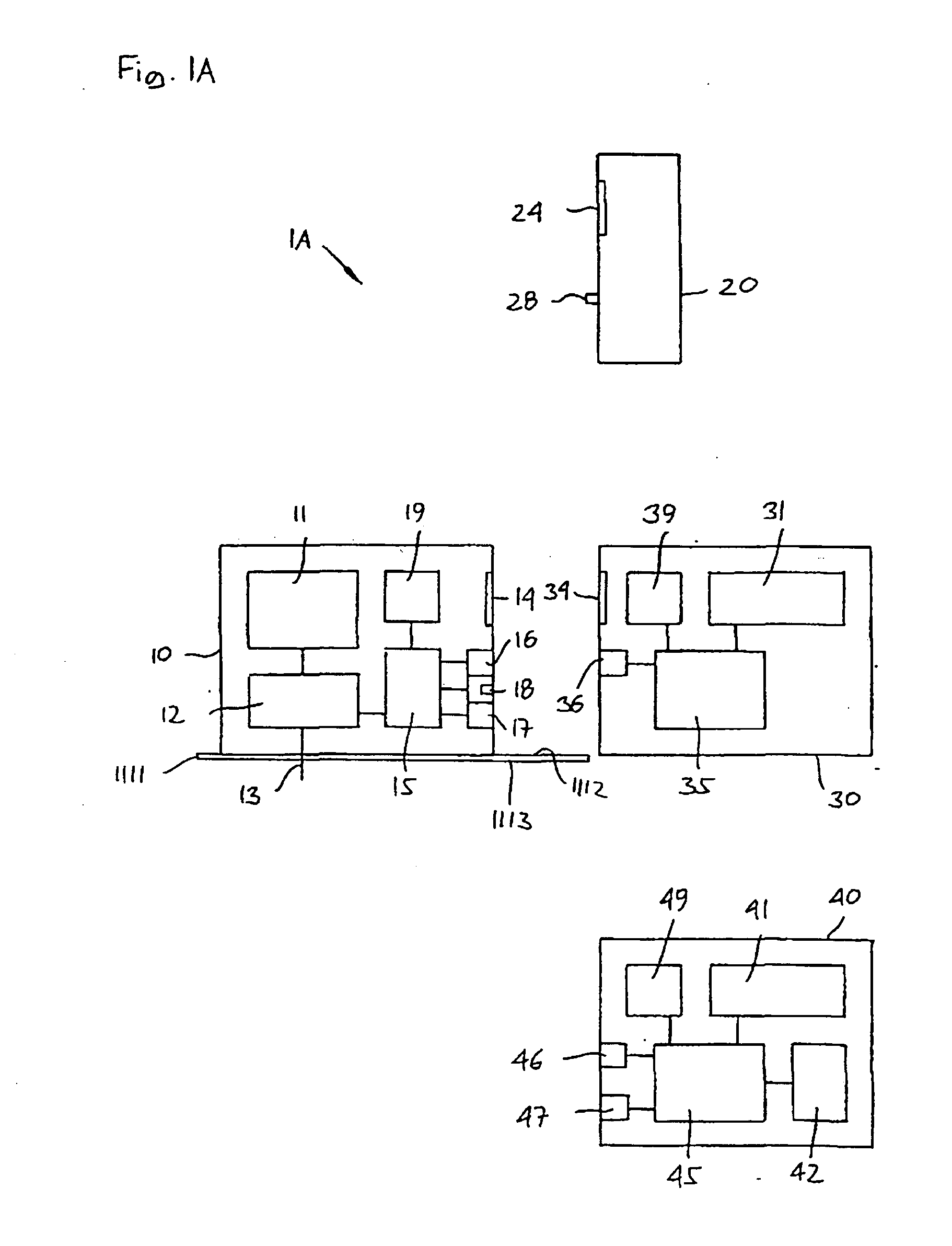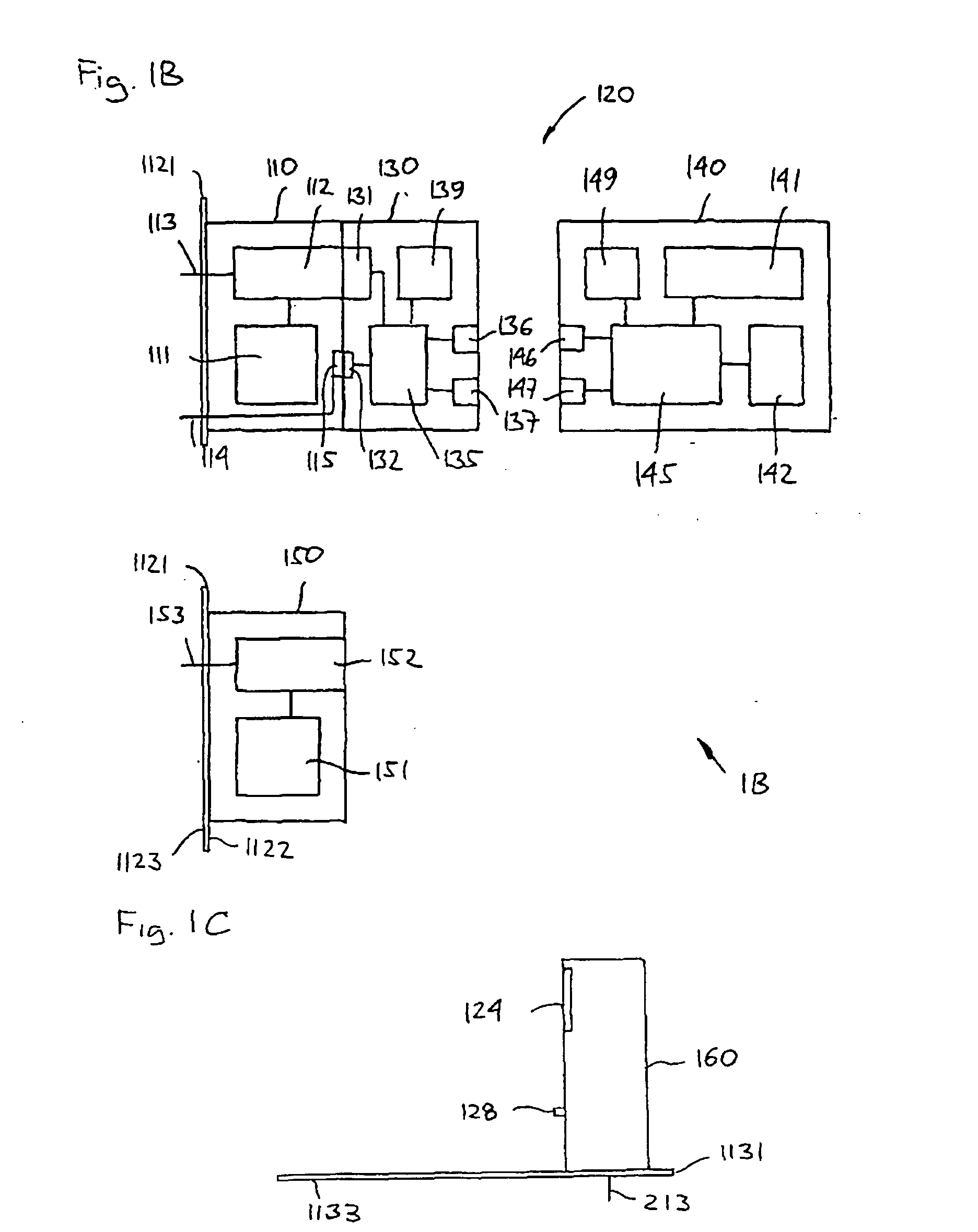Modular drug delivery system
a drug delivery system and module technology, applied in the direction of infusion needles, process and machine control, instruments, etc., can solve the problems of complex user experience, cumbersome loading of the cartridge into the pump mechanism, and limited use of insulin pumps, so as to achieve high degree of flexibility, cost-effective and efficient
- Summary
- Abstract
- Description
- Claims
- Application Information
AI Technical Summary
Benefits of technology
Problems solved by technology
Method used
Image
Examples
first embodiment
[0091]FIG. 1A shows a schematic representation of the invention. Correspondingly, the configuration of the different structures as well as there relative dimensions and locations are intended to serve illustrative purposes only.
[0092] More specifically, a drug delivery system (here: infusion system) 1B comprises a reservoir unit 10 in combination with three different control units 20, 30, 40, in which a combination of the reservoir unit and one of the control units provides an operative drug delivery device.
[0093] The reservoir unit comprises a drug reservoir 11 and a pump 12 comprising an outlet means 13 and adapted for infusing a drug into a body of a user in accordance with instructions (i.e. a local command) received from a local processor 15. The pump may be of the metering type, i.e. the amount of drug infused corresponds to the controlling signals received from the local processor or the infusion unit may be provided with detecting means for determining the amount of drug ac...
second embodiment
[0108]FIGS. 2A and 2B show the invention. More specifically, a drug delivery (here: infusion) system 2 comprises a reservoir unit 200 in combination with two different control units 250, 260, in which a combination of the reservoir unit and one of the control units provides an operative drug delivery device.
[0109] The reservoir unit comprises an outer housing defining the outer boundaries for the combined infusion device, the housing having an upper surface 201, a rim portion 202 and a lower surface 203 adapted to be arranged towards a skin surface of a user. Preferably the lower surface is provided with an adhesive (not shown) allowing the device to be attached directly to the skin surface. In the upper surface an opening 204 is provided adapted to receive a control unit, the reservoir unit and the control units including mating coupling means 205, 255, 265 so as to allow a control unit to be secured to the reservoir unit, the mating coupling means including electrical contacts 206...
third embodiment
[0117]FIGS. 3A and 3B show the invention. More specifically, a drug delivery (here: infusion) system 3 comprises a reservoir unit 300 in combination with three different control units 350, 360, 370 in which a combination of the reservoir unit and one of the control units provides an operative drug delivery device.
[0118] The reservoir unit comprises an outer housing defining the outer boundaries for the combined infusion device, the housing having an upper surface 301, a rim portion 302 and a lower surface 303 adapted to be arranged towards a skin surface of a user and preferably being provided with an adhesive. The reservoir unit is provided with a “cut-out” portion 304 adapted to receive a control unit, the reservoir unit and the control units including mating coupling means 305, 355, 365, 375 so as to allow the control unit to be secured to the reservoir unit, the mating coupling means including electrical contacts. As can be seen, the lower portion comprises an extension in the f...
PUM
 Login to View More
Login to View More Abstract
Description
Claims
Application Information
 Login to View More
Login to View More - R&D
- Intellectual Property
- Life Sciences
- Materials
- Tech Scout
- Unparalleled Data Quality
- Higher Quality Content
- 60% Fewer Hallucinations
Browse by: Latest US Patents, China's latest patents, Technical Efficacy Thesaurus, Application Domain, Technology Topic, Popular Technical Reports.
© 2025 PatSnap. All rights reserved.Legal|Privacy policy|Modern Slavery Act Transparency Statement|Sitemap|About US| Contact US: help@patsnap.com



